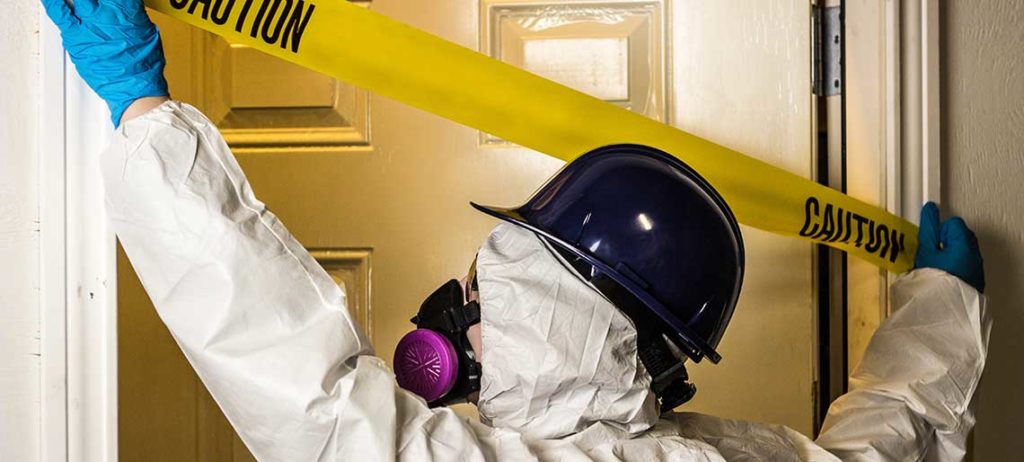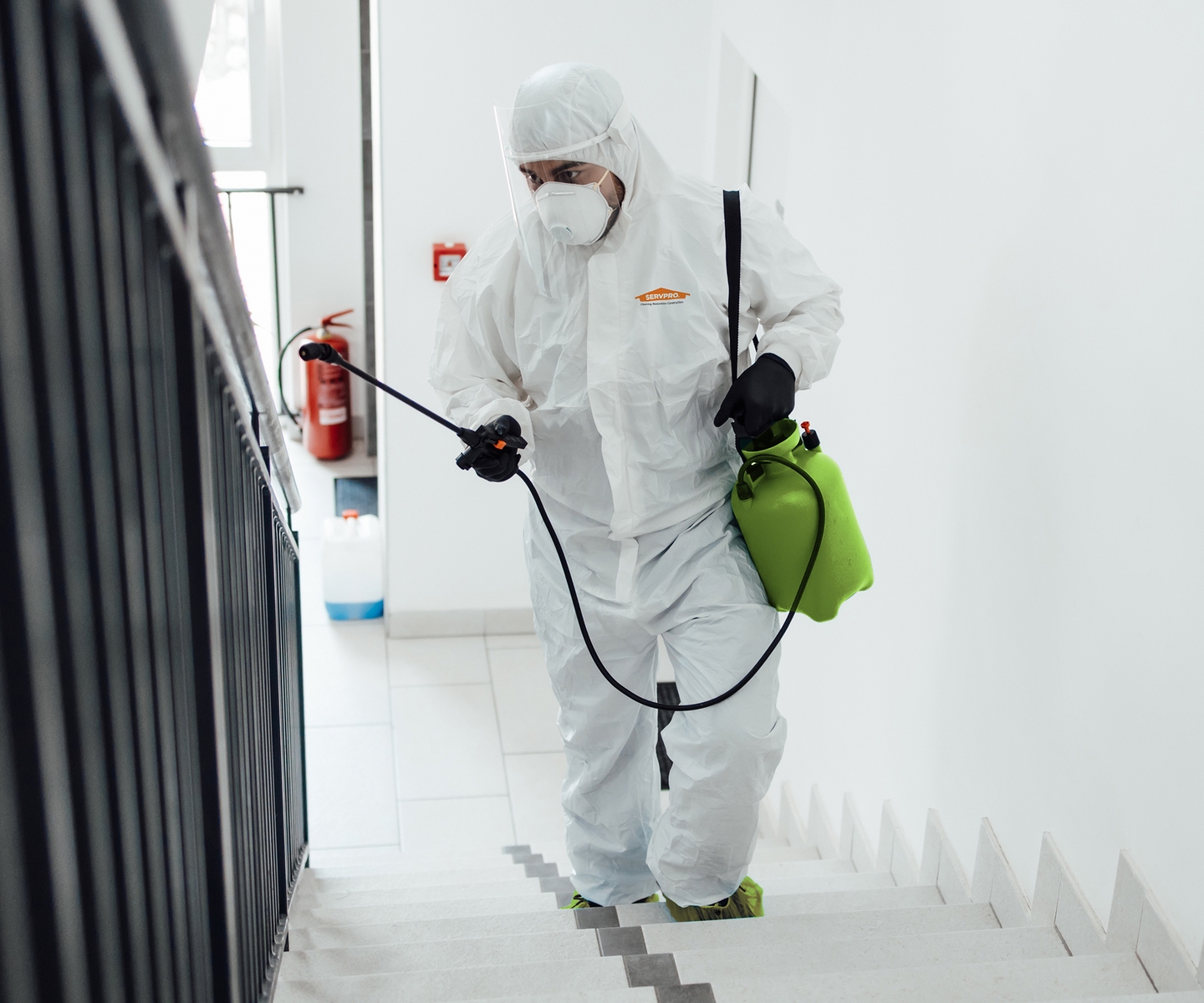Sewage Cleanup Providers: Rapid and Safe Remediation of Contaminated Locations
Sewage Cleanup Providers: Rapid and Safe Remediation of Contaminated Locations
Blog Article
Professional Biohazard Cleansing and Purification for Blood, Bodily Fluids, and Hazardous Products
The possible health threats associated with exposure to biohazards emphasize the crucial demand for meticulous handling and complete cleanup. As we navigate the detailed landscape of biohazard clean-up, recognizing the subtleties of policies, compliance, and the specific tools at play becomes vital in making certain a safe and complete purification procedure.
Wellness Threats of Biohazard Exposure
Exposure to biohazards presents substantial wellness risks that can lead to serious repercussions for neighborhoods and individuals alike. Biohazards include a variety of biological substances, consisting of blood, bodily fluids, mold, bacteria, viruses, and other potentially contagious products. When individuals enter contact with these biohazards, whether with mishaps, improper handling, or environmental exposure, they face the threat of having significant illnesses or conditions.
Among the key wellness threats connected with biohazard direct exposure is the transmission of transmittable illness. Bloodborne microorganisms such as HIV, hepatitis B and C, and various bacteria can be existing in biohazardous products, presenting a direct risk to human health and wellness. Inhaling air-borne biohazards like mold and mildew spores or coming into contact with infected surface areas can likewise result in breathing issues, allergic reactions, and various other unfavorable health results.
Moreover, biohazard exposure can have long-term wellness effects, with some diseases showing up years after the preliminary contact (Blood Cleanup). Consequently, it is critical to prioritize proper biohazard cleansing and decontamination to minimize these wellness dangers and guarantee the safety of neighborhoods and individuals

Specialized Educating for Biohazard Cleanup
When it pertains to handling biohazard cleanup effectively and securely, specialized training plays a fundamental function in making sure correct decontamination procedures are adhered to. Biohazard cleanup requires certain expertise and abilities to effectively reduce dangers connected with bloodborne virus, bodily fluids, and dangerous products. Specialists learnt biohazard cleaning undergo rigorous instruction on how to safely deal with, eliminate, and take care of biohazardous products to avoid contamination and exposure.
Specialized training for biohazard clean-up covers an array of important topics, including appropriate personal protective equipment (PPE) usage, bloodborne pathogen awareness, decontamination techniques, and contaminated materials disposal protocols. Individuals educated in biohazard cleaning are outfitted with the necessary know-how to examine contamination degrees, determine prospective risks, and implement appropriate cleaning treatments in conformity with regulative requirements.
Continuous training and education are paramount in the area of biohazard clean-up to stay upgraded on the most up to date purification innovations, safety methods, and laws. By purchasing specialized training, biohazard clean-up professionals can properly react to emergency cleaning scenarios and secure both public health and the setting.
Value of Proper Purification Methods
Using correct decontamination techniques is critical in biohazard clean-up to effectively minimize and remove dangerous products health and wellness risks. Efficient decontamination not just makes certain the removal of noticeable traces of blood, bodily liquids, and other biohazards however likewise targets invisible virus that might present major wellness risks otherwise properly removed. By following stringent purification protocols, trained experts can significantly decrease the threat of exposure to harmful bacteria, infections, and bacteria that might result in infections or conditions.
Correct purification strategies biohazard cleanup magazine involve using specific tools and anti-bacterials that are specifically created to reduce the effects of biohazards successfully. Extensive cleaning and sanitation of contaminated areas read this are vital to stop the spread of virus and ensure a safe environment for owners. Additionally, the correct disposal of biohazardous waste following purification procedures is crucial in protecting against contamination of other surfaces or people.

Equipment and Devices for Safe Cleaning
When dealing with blood, physical liquids, or harmful products, biohazard cleaning experts count on specialized equipment to minimize direct exposure threats and thoroughly sanitize the affected area. Additionally, biohazard cleansing packages including anti-bacterials, absorbing materials, and biohazard bags are utilized to safely consist of and get rid of of infected things.
Advanced cleaning tools like hospital-grade anti-bacterials, HEPA-filtered vacuum cleaners, and fogging devices are used to disinfect surfaces and remove biohazards effectively. Specialized devices such as sharps containers and biohazard waste disposal bins are used to safely take care of sharp things and biohazardous waste materials. By utilizing the best devices and devices, biohazard cleansing specialists can ensure a thorough cleanup process that prioritizes security and reduces health and wellness dangers for both employees and passengers of the damaged room.
Regulations and Compliance in Biohazard Cleaning
Correct adherence to regulations and conformity standards is top article paramount in biohazard cleaning to guarantee the safety and security of both workers and the environment. Government firms such as OSHA (Occupational Safety and Wellness Management) and the EPA (Epa) have actually developed particular guidelines for biohazard cleanup treatments to decrease health and wellness dangers and environmental contamination. These laws cover a series of aspects consisting of the handling, transport, and disposal of biohazardous materials, along with the essential training and safety tools required for workers included in the cleanup procedure.
Biohazard cleaning companies must remain updated with these policies to guarantee that their procedures satisfy the required safety and security criteria. Failure to adhere to these guidelines can lead to severe effects, including penalties, legal action, and threatening the health of people and the atmosphere. By following rigorous laws and compliance measures, biohazard cleaning firms can properly alleviate risks and make sure a detailed and risk-free cleaning process for all parties included.
Conclusion
To conclude, biohazard cleaning and purification call for specific training, correct techniques, and adherence to guidelines. Direct exposure to blood, bodily liquids, and unsafe materials poses substantial wellness risks, making it critical to use the ideal tools and tools for risk-free cleaning. By adhering to strict protocols and standards, specialists can effectively reduce the risks connected with biohazard exposure and guarantee the security of both themselves and others.
As we browse the detailed landscape of biohazard cleanup, understanding the nuances of guidelines, conformity, and the specialized devices at play ends up being important in making certain a extensive and risk-free purification procedure. (Blood Cleanup)
When it comes to managing biohazard cleaning successfully and securely, specialized training plays a basic duty in ensuring proper decontamination procedures are followed.Utilizing proper decontamination strategies is crucial in biohazard cleanup to effectively decrease and remove unsafe products wellness dangers. Furthermore, biohazard cleaning kits having anti-bacterials, absorptive materials, and biohazard bags are used to securely dispose and contain of contaminated things.
Government agencies such as OSHA (Occupational Security and Health And Wellness Administration) and the EPA (Environmental Security Agency) have established particular standards for biohazard clean-up procedures to lessen wellness threats and ecological contamination.
Report this page